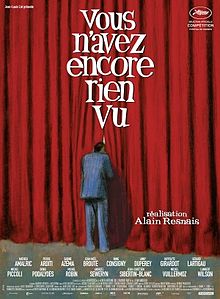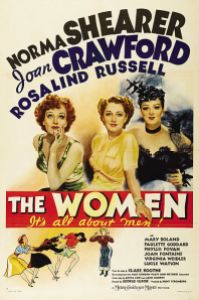Post Tenebras Lux (2012)
The director, Carlos Reygada, is well-regarded, especially for his earlier film Luz Silencosia (2007). Maybe his other films are better than this, but I’m not inclined to believe it.
This “impressionistic film,” emulates the work of artists like Monet and Degas and has some well composed shots, but the pervasive attitude of the film seems to be “look at me, I’m making an intelligent film. I dare you to not like it, so I can prove my superiority.”
Reygadas has said he made the film so “reason would intervene as little as possible.” Sadly, he wasn’t kidding.
I hated this movie and feel like I’ve already spent more energy trying to make sense of it than Mr. Reygadas did.
You Ain’t Seen Nothin’ Yet (2012)
When famed playwright, Antoine d’Anthac dies, the executor of his estate calls his former associates to read his will where the playwright addresses them from beyond the grave via a recorded message. Before he died, a production company inquired about mounting a new production of one of his plays, Eurydice. He asked the new director to film a rehearsal. This group of former associates (all of whom have previously participated in productions of Eurydice) will watch the video and decide if the production will go forward.
As these former stars watch a younger group of performers reinterpret the work, they recite the lines they spent years performing. Before long, they begin acting out their scenes in the audience. Eventually, the two competing performances merge, with the same character played by different people from one scene to the next.
Alain Resnais’s short documentary Night and Fog (1955) was one of the first films to document the atrocities of the Holocaust and his early feature films, Hiroshima mon amour (1959), and Last Year at Marienbad (1961) are highly acclaimed. His death two years after this film was released adds a dimension to the work. It’s easy to imagine Resnais working through questions about his own legacy while making this film.
This is an interesting, experimental film, but I’m not sure the experiment worked. I wanted to like it, but it felt a little too self-indulgent and left me lukewarm.
The Women (1939)
When Mary Haines (Norma Shearer) discovers her husband is having an affair with a perfume counter girl, Crystal Allen (Joan Crawford), they get divorced. Two years later, Mary accidentally discovers Crystal is having an affair of her own and uses this information to win her ex-husband back.
Despite an all-female cast, this is an oddly misogynist film which suggests the whole point of feminine existence is to seek male approval.
There’s an odd Technicolor sequence in the middle of the film where Ms. Haines goes to a fashion show featuring outfits designed by Adrian which doesn’t seem to have a point except to say women love fashion.
Norma Shearer was an early superstar, nominated for six Academy Awards for Best Actress by 1938 and married to Irving Thalberg, the Hollywood producer who helped create MGM. After Thalberg’s sudden death from pneumonia in 1936, her career slowed considerably and she retired from films in 1942. With her over pronunciation and minimal emotion, Shearer is a less charismatic Katharine Hepburn.
In her early career, Joan Crawford was often cast as a sympathetic romantic lead, but with this movie, she shed her romantic image, and played a calculating home wrecker. After this film, she specialized in unlikable and manipulative women which provided her with a dependable career long after many of her contemporaries (such as Mrs. Shearer) faded.
Close friends with Katherine Hepburn, director George Cukor directed her in many of her early roles including Little Women (1933), Sylvia Scarlett (1935), and The Philadelphia Story (1940), and several films pairing her with Spencer Tracy. His friendship with Hepburn endeared him to the Hollywood elite, and late in his career, he won an Oscar for his collaboration with Audrey Hepburn in My Fair Lady (1964).
This film is interesting because of who was involved in its production and its insight into the outdated ideas still common place in 1939, but it’s a product of a very specific time which limits its appeal to contemporary audiences.


